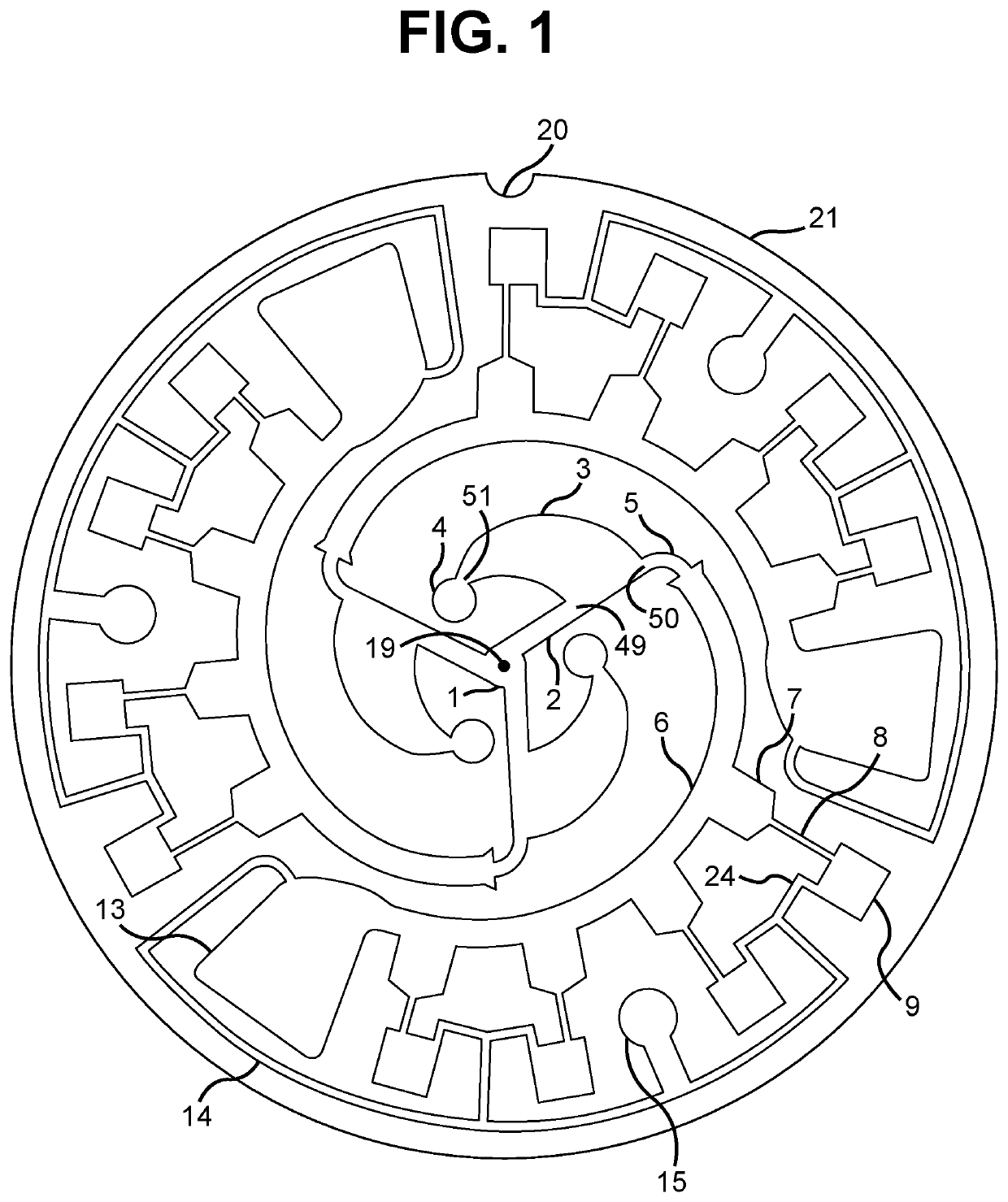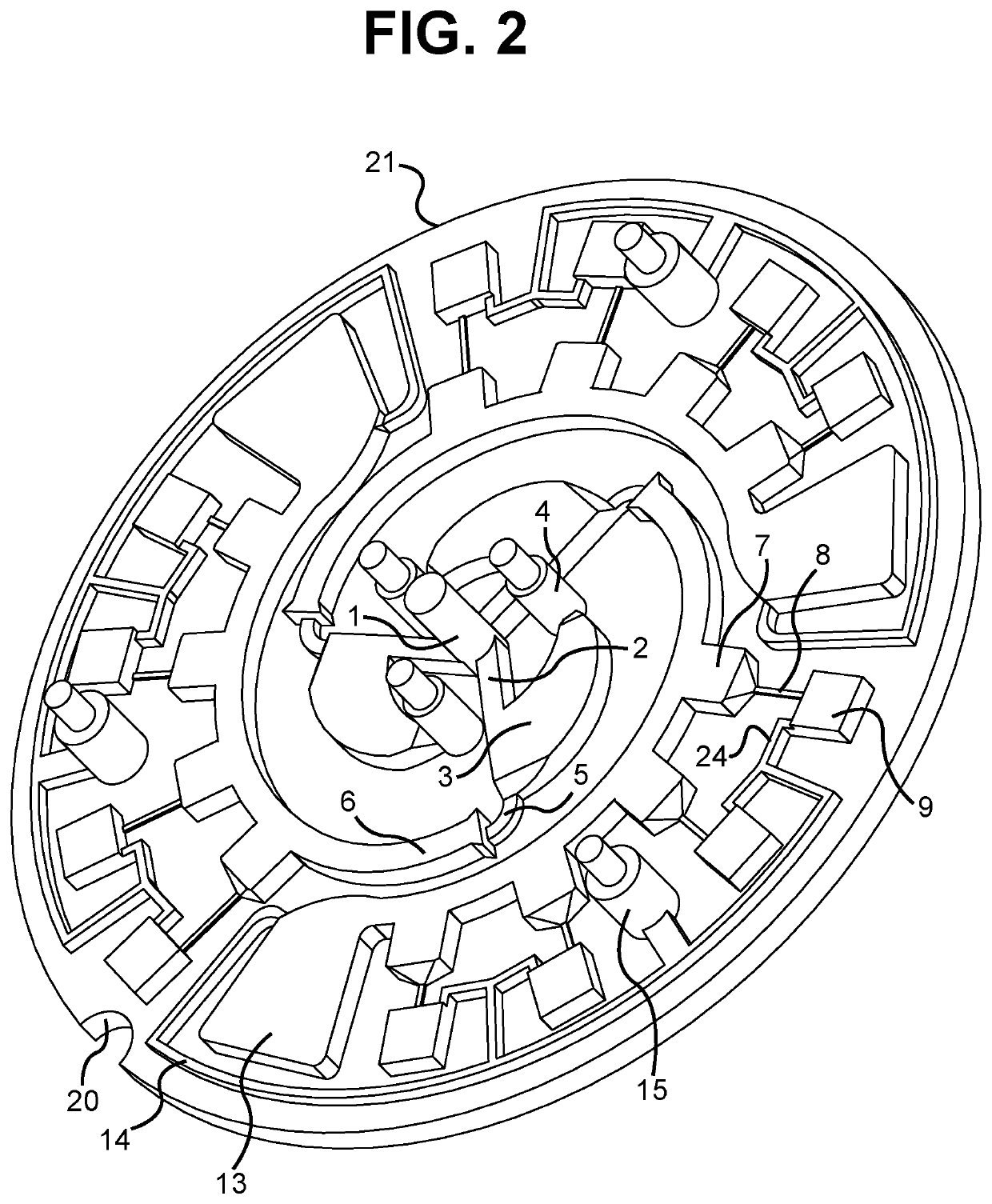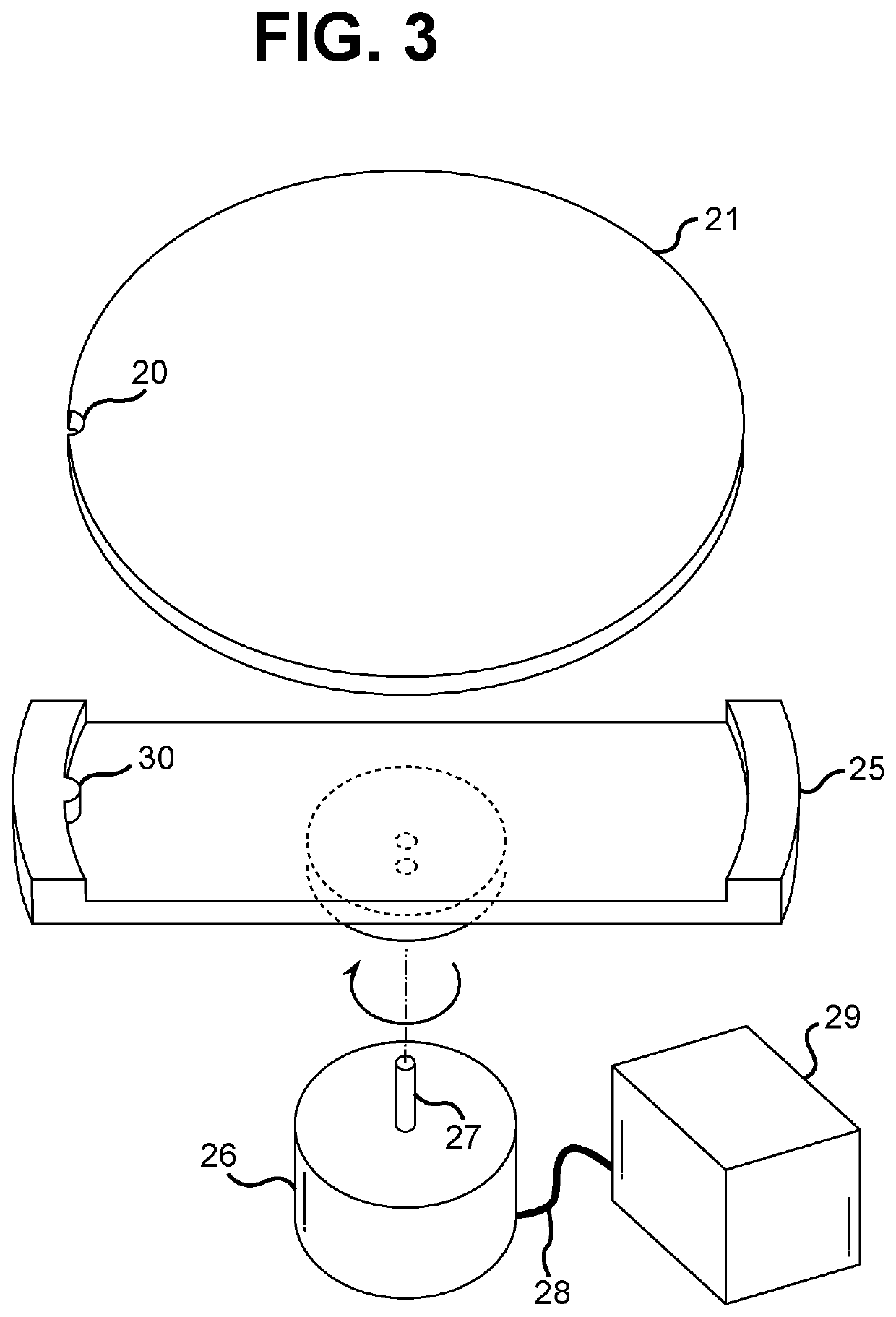Fluidics device, apparatus, and method for partitioning fluid
a fluid and fluid technology, applied in fluid controllers, centrifuges, laboratory glassware, etc., can solve the problems of increasing the complexity of assays, and requiring more time and effort to complete assays
- Summary
- Abstract
- Description
- Claims
- Application Information
AI Technical Summary
Benefits of technology
Problems solved by technology
Method used
Image
Examples
Embodiment Construction
[0051]Embodiments of the invention are intended to partition fluids. To this end, there is a plurality of suitable methods and materials which can be used to produce embodiments of the invention. These materials and methods, along with any surface coatings or device treatments implemented, can be selected to suit a variety of applications, including but not limited to chemical and biological experiments or assays, and medical diagnostics.
[0052]Embodiments of the invention can be manufactured as two separate halves of a single centrifugal fluidic device bisected by a plane which is coplanar with the plane of rotation of the device. These halves can be joined together, which allows for the loading of reagents or assay materials into the centrifugal fluidic device prior to assembly of the centrifugal fluidic device. These halves do not need to be made from the same material, and can be made from a variety of materials as are suitable to the intended applications of the centrifugal flui...
PUM
 Login to View More
Login to View More Abstract
Description
Claims
Application Information
 Login to View More
Login to View More - R&D
- Intellectual Property
- Life Sciences
- Materials
- Tech Scout
- Unparalleled Data Quality
- Higher Quality Content
- 60% Fewer Hallucinations
Browse by: Latest US Patents, China's latest patents, Technical Efficacy Thesaurus, Application Domain, Technology Topic, Popular Technical Reports.
© 2025 PatSnap. All rights reserved.Legal|Privacy policy|Modern Slavery Act Transparency Statement|Sitemap|About US| Contact US: help@patsnap.com



